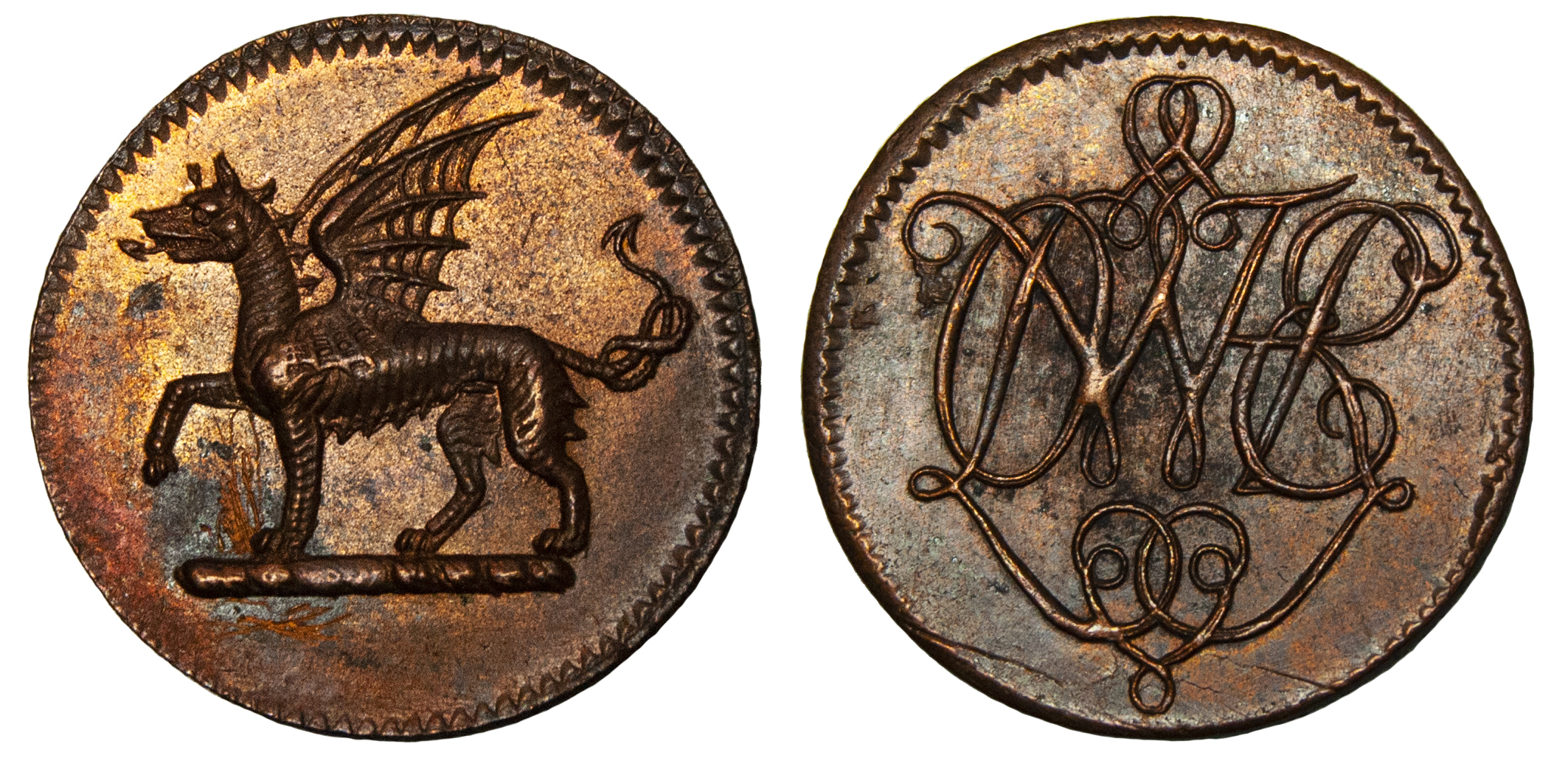Description
Copper token (23mm.) of the Whitehaven Colliery in West Cumberland issued around 1685 by Sir John Lowther Bart. Obv : a dragon walking left. Rev : ‘LOWTHER’ cypher. (D&W 291/109 ; Fin. 18).
About Extremely Fine.
The Lowthers had purchased the manor of St. Bees with its coal mine in 1630 and by the end of the 17th. century the family largely controlled and developed the coal mining around Whitehaven. The second baronet Sir John Lowther, although largely absent in London, efficiently conducted his colliery affairs through his two able stewards Thomas Tickell and William Gilpin, both of whom carried out their master’s goal of acquisition and monopoly of coal mines in the area.
At some point in the 1680s a system of tokens was set up to act as tallies to record the packhorse or cart loads that were delivered from the colliery to collier ships moored at the Whitehaven docks which transported coal to Ireland where there were no coal reserves. Three types of token were used, each one in brass and copper and were used between 1682 and 1725. They had different uses depending on whether the loads were delivered to ships or staithes, and some had the function of bank tokens.
Sir John chose to portray his own crest (a dragon passant argent) on his token. The reverse has the word ‘Lowther’ in entwined cypher form. They are very high quality and were most probably made at the Royal Mint. They are also one of the first British mining tokens. John Lowther was largely responsible for the development of the West Cumberland Coalfield and when he died in 1706 left a thriving coal industry and a bustling port of more than 60 ships supplying the Irish Market with coal. *
* Michael Finlay : ‘The Mining and Related Tokens of West Cumberland’



